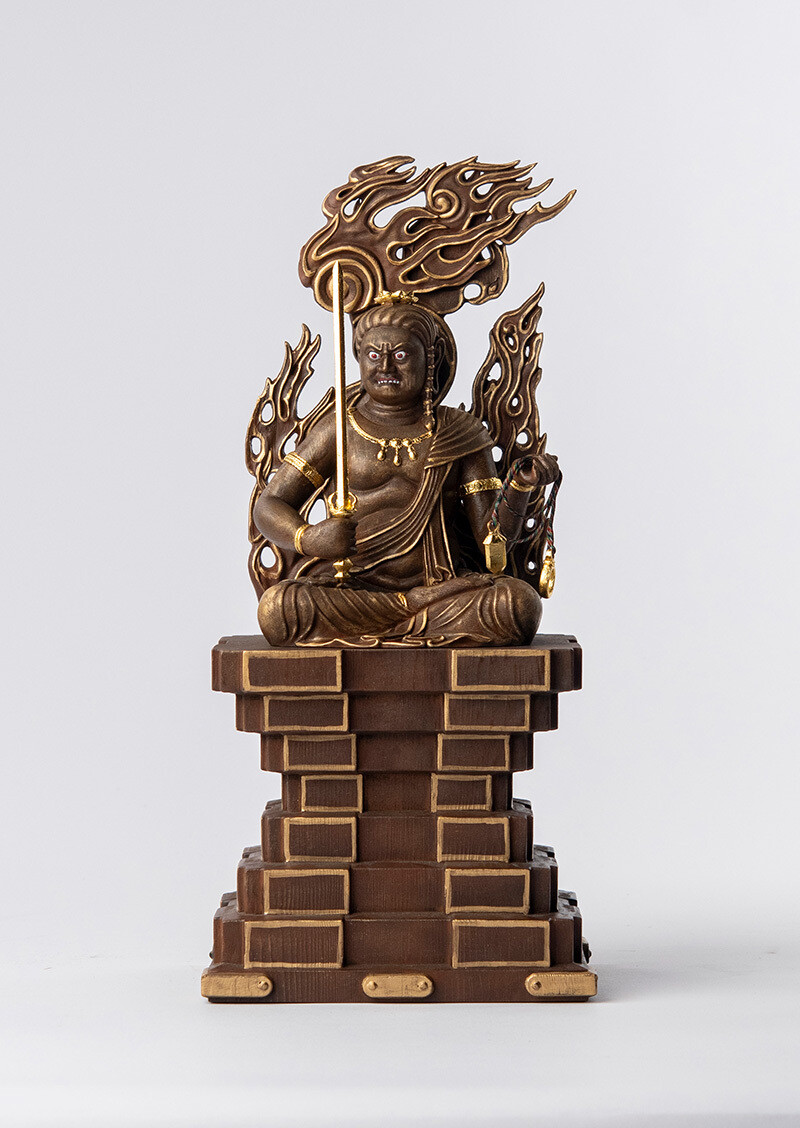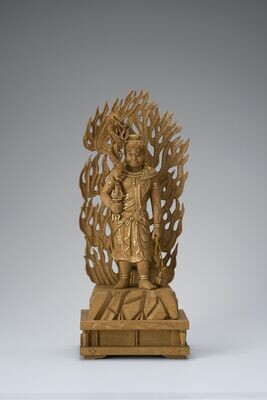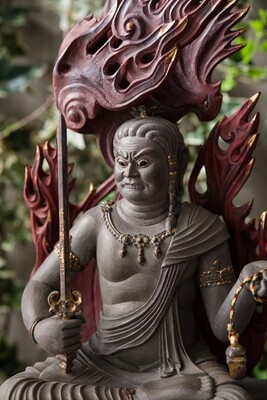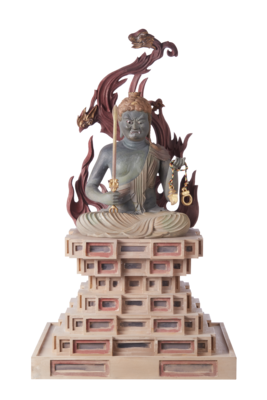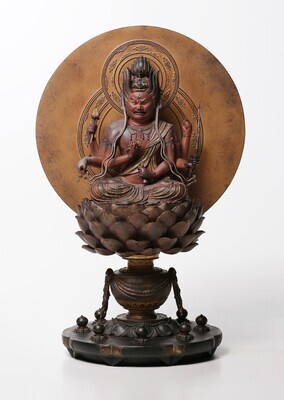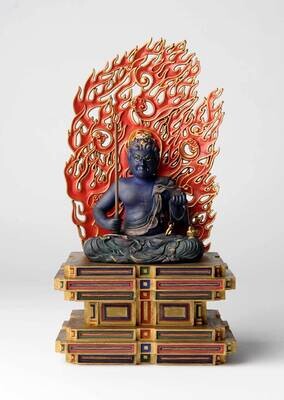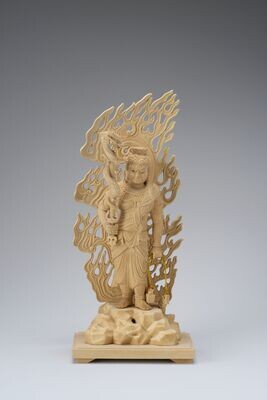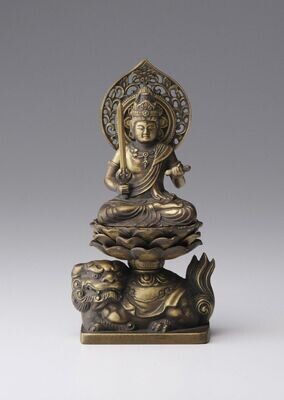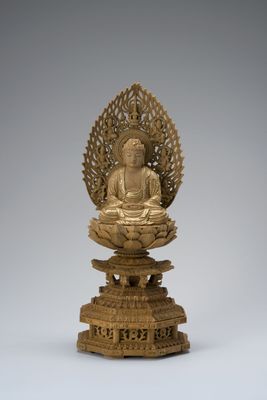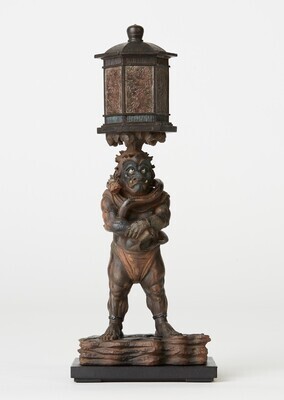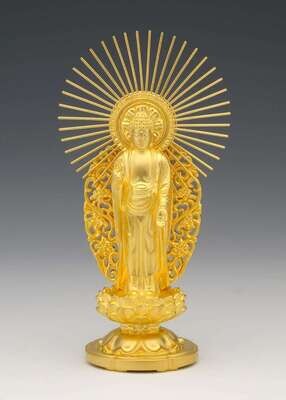Fudo Myoo (木造不動明王坐像)
The "Real Buddha Statue" is a wooden carved Buddha statue that faithfully reproduces the artistic beauty of historically and artistically valuable Buddhist statues designated as national treasures or important cultural properties, and is sized for easy display in your home.
The production process of the Real Buddha Statue Wooden Fudo Myoo Sitting Statue, which achieves high quality at an affordable price, involves the manufacturer performing high-precision 3D scanning of the prototype they created. They then use the acquired 3D data to carve the statue in a wood carving workshop with exceptional craftsmanship. Afterward, each statue is meticulously hand-painted in the "Isumu" workshop. The high-quality and affordable pricing achieved through the use of CNC wood carving technology based on 3D data brings the world of Japanese traditional art closer to people.
The coloration supervision was entrusted to the highly popular and skilled coloration master, Chihiro Takamura, who has inherited traditional techniques and skills. The elegant and refined coloration, with a base that evokes the passage of time and adorned with brilliant gold leaf, enhances the intricate beauty of the sculpture while preserving the natural beauty of the wood.
The model for the statue is the "Wooden Fudo Myoo Sitting Statue," a national treasure created by the renowned Buddhist sculptor Kaikei from the Kamakura period. It features a realistic and intense expression of wrath and powerful presence, yet it also displays Kaikei's characteristic intellectual and dignified expression and physique. The strikingly beautiful flaming halo and the seashell-shaped base, symbolizing a solid rock, harmoniously complement the statue, giving a sense of the majesty of Fudo Myoo.
National Treasure Reproduction:
With the theme of "Copying, Learning, and Passing Down: The Origin of Beauty Creation," a special exhibition titled "Copying and Reproduction in Japanese Art" was held at the Tokyo National Museum in 2005.
The act of "copying and reproducing" works of art has been a practice employed by artists from both the East and West throughout history. In Roman times, numerous masterpieces of Greek sculpture were repeatedly replicated in marble. During the Muromachi period, the great Japanese painter Sesshu learned and incorporated foreign artistic styles and techniques through copying, laying the foundation for many of his own masterpieces. Sesshu's works, in turn, were avidly studied and reproduced by artists of the Kano school during the Edo period.
While "copying and reproducing" is often considered to be of lesser value than the original works, in the world of fine arts and crafts, this practice serves as the very foundation for further creativity and has been the driving force behind the regeneration of classics. Through our products, we hope that you can feel the spirit of transmitting and copying, and we sincerely wish that as a form of Buddhist art and objects of prayer, more and more people will take an interest in National Treasure Reproduction Buddha Statues.
- Size: H36×W16.5×D14 (cm), 1381g
- Material: Hinoki/ 檜
- You can choose the option to consecrate this statue (give an eye-opening ceremony) before it is shipped from Japan. If you choose this option, we will bring the statue to a Japanese temple, and pay them the necessary fees so that your statue is properly consecrated. The temple will issue a certificate of proof with your name on it, which will also be shipped together with your statue
- Shipped globally from Japan by using DHL. DHL is the world-class shipping services provider who makes international delivery a fast, smooth, and hassle-free experience. Delivery time can be faster than when shopping at an e-commerce website in your country, and of course your package will be covered by insurance. You can check the shipping cost for your entire order before you make a purchase
